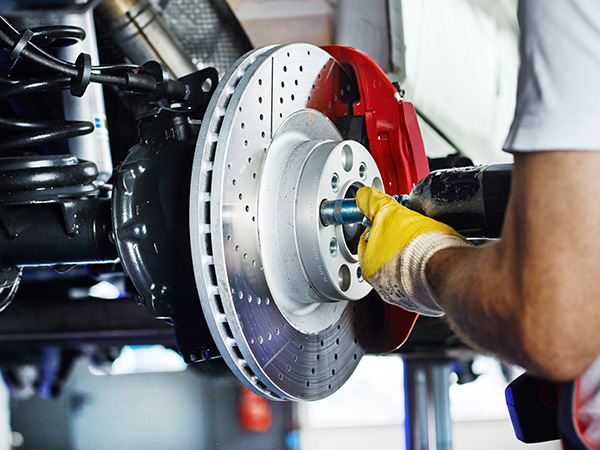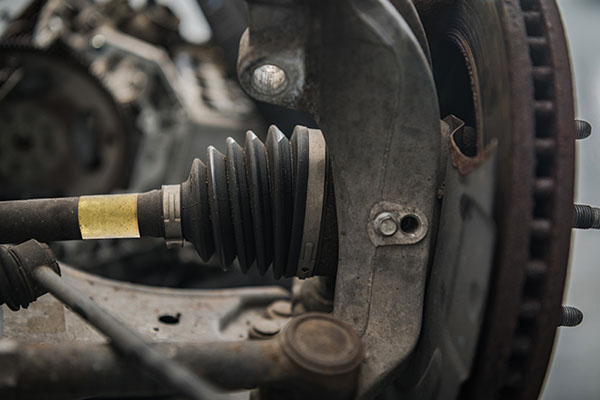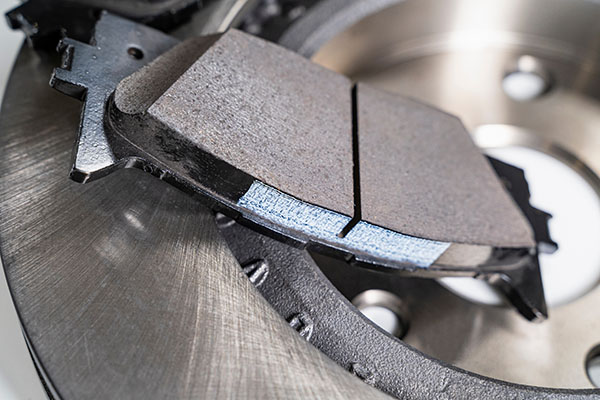Posted on 7/26/2024

There's nothing quite like the excitement of hitting the open road, whether you're planning a cross-country adventure or a weekend getaway. But before you start your engine and embark on your journey, ensuring your vehicle is road-ready is crucial. The last thing you want is an unexpected breakdown in the middle of nowhere. That's why we've put together this comprehensive pre-trip checklist to help you prepare your vehicle for any trip, big or small. 1. Inspect Your Tires Your tires are the only part of your vehicle that touches the road, making them incredibly important for safety and performance. Start by checking the tire pressure. Under-inflated tires can lead to poor fuel efficiency and increased wear, while over-inflated tires can be just as dangerous. Use a reliable pressure gauge and compare the readings to the recommended levels found in your vehicle's manual or on the tire information placard. Next, examine the tread depth. Worn t ... read more
Posted on 6/28/2024

Remember the thrill of driving your new car off the dealership lot, gleaming under the sun with a pristine finish? Over time, exposure to the elements and daily wear can dull that initial luster. But don't worry—your car can reclaim that showroom shine with the right auto detailing services. Here's how our top-notch car detailing services can help you achieve that showroom shine. 1. The Auto Detailing Service Auto detailing goes beyond a simple car wash. It involves a thorough cleaning, restoration, and finishing of a vehicle inside and out to produce a show-quality level of detail. At D&E Auto Repair, our expert detailers use specialized tools and products to clean every inch of your car meticulously. No spot is left unattended, from the exterior paint and wheels to the interior seats and dashboard. This comprehensive approach ensures your car looks fantastic and is protected against future wear and tear. 2. Bringin ... read more
Posted on 5/27/2024

Are you experiencing issues with your vehicle's transmission? Ignoring these warning signs can lead to significant problems down the road. This article will explain seven common indicators that it's time to seek transmission repair services. 1. Strange Noises One of the most apparent signs of transmission trouble is strange noises coming from your vehicle. If you hear grinding, whining, or clunking sounds while shifting gears, it could indicate issues with the transmission. These noises often point to worn-out components or low transmission fluid levels. 2. Slipping Gears Another indication of transmission problems is when your vehicle slips out of gear unexpectedly or experiences a delay in gear engagement. This phenomenon, known as slipping gears, can occur due to worn clutch plates, a faulty solenoid, or low transmission fluid levels. If you notice ... read more
Posted on 4/26/2024

Is there anything more vital to your safety on the road than your car's brakes? Can you trust your brakes to respond swiftly and effectively? Brake maintenance is not just about ensuring your car stops when you want it to; it's about safeguarding yourself, your passengers, and everyone sharing the road with you. The Brakes Your vehicle's braking system is a complex network of components working together to ensure safe and efficient stopping power. At the heart of this system are several key parts: Brake Pads These friction materials press against the rotors to slow down or stop the wheels from turning. Rotors (Discs) Rotors are metal discs mounted on the wheel hubs. When the brake pads clamp onto the rotors, friction is generated, causing the wheels to slow down or stop. Calipers ... read more
Posted on 3/22/2024

Your vehicle's front window is vital for safety and visibility on the road. However, cracks and chips can occur due to various factors, compromising both aesthetics and structural integrity. We have prepared a list of best practices to avoid this annoying issue and keep your front window pristine. 1. Maintain a Safe Following Distance One of the most effective ways to prevent front window damage is by maintaining a safe following distance behind other vehicles. This allows abundant reaction time to avoid debris kicked up by other vehicles, reducing the risk of rocks or gravel striking your front window and causing chips or cracks. 2. Avoid Sudden Temperature Changes Extreme temperature fluctuations can stress your vehicle's front window, increasing the likelihood of cracks or chips. Avoid subjecting your vehicle to sudden temperature change ... read more
Posted on 2/28/2024

Your car's axle is a crucial component that ensures smooth and safe driving. However, like any part of your vehicle, it can encounter problems over time. Being aware of the signs of axle issues can help you address them before they escalate into major problems. Fundamentals Of An Axle The car axle is a shaft that connects the wheels on opposite sides of the vehicle. Its primary function is to transfer power from the engine to the wheels, enabling the vehicle to move forward or backward. Additionally, the axle supports the vehicle's weight and helps maintain stability and control while driving. 1. Vibrations While Driving One of the most noticeable signs of axle problems is vibrations while driving. If you feel unusual vibrations, especially at higher speeds or during turns, it could indicate issues with the axle. These vibrations may stem from ... read more
Posted on 1/27/2024
.jpeg)
As a vehicle owner, it's natural to feel overwhelmed and confused by the many technical terms thrown around in the automotive industry. One such term is the octane rating of fuel, which is often the subject of much discussion and speculation. You may be wondering whether it's a crucial factor to consider or just a myth surrounded by marketing hype - luckily, we have the answer. Understanding Octane Ratings Octane rating, commonly seen at fuel stations as numbers like 87, 91, or 93, measures a fuel's ability to resist "knocking" or "pinging" during combustion. This knocking is a form of engine inefficiency that occurs when fuel combusts prematurely in the cylinder, leading to a disruption in the engine's operation. A higher octane rating indicates greater resistance to knocking. But it's a common misconception that higher octane fuel inh ... read more
Posted on 12/3/2023

The holiday season is upon us, and for many, that means embarking on a road trip to spend quality time with loved ones. Whether you're heading over the river and through the woods or taking a cross-country adventure, careful packing and planning can make your holiday road trip smooth and memorable. The team at D&E Auto Repair is here to offer tips to ensure your journey is as festive as the destination. Packing Smart for the RoadSafety First Before packing anything else, ensure your vehicle is in top shape. Check tires, brakes, fluids, and have a professional inspection if needed. Emergency Kit Include an emergency kit with items like a flashlight, first aid supplies, jumper cables, and a spa ... read more
Posted on 11/28/2023
.jpeg)
It's worth noting that your car's suspension system plays a crucial role in ensuring that your ride is smooth and comfortable. As with any important component, it's necessary to address any issues that arise. That's why we'll explore some common suspension problems and provide tips for avoiding them so that you can continue to enjoy a safe and pleasant ride. 1. Worn-Out Shocks and Struts If you're feeling like your journey is a wild ride on a rough path, take it as a sign to check your shocks and struts. Be aware of any overactive bouncing or a sudden dip during braking. Just like in life, a smooth and steady ride is within reach with proper maintenance. Prevention Tips Regularly inspect your shocks and struts for leaks or visible damage. Replace them every 50,000 miles or as recommended by your vehicle's manual. 2. Uneven Tire Wear Uneven tire wear, especially on the edges, indicates a suspension issue ... read more
Posted on 10/30/2023

Welcome to the world of stopping power, where not all brake pads are created equal. Yes, that means that brake pads are split into different types with distinctive characteristics. Some perform well, and others last forever - let's take a look and determine if you need a new set of brake pads! Semi-Metallic Brake Pads These are the workhorses of the brake pad world. Composed of a blend of metals, including copper, iron, and steel, they offer excellent stopping power and durability. They perform well under a variety of conditions but tend to produce more dust and can be noisier than other types. Organic Brake Pads For the eco-conscious driver, organic brake pads might be the way to go. Made from natural materials like glass and rubber, they are known for their quiet operation and low dust production. However, they can wear out faster ... read more